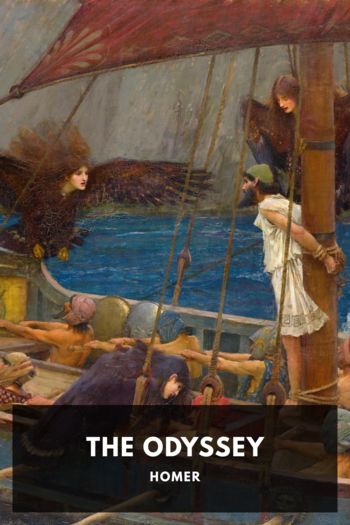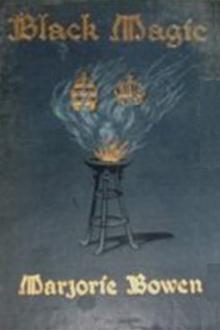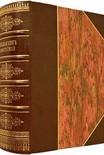The Wrecker, Clive Cussler [book club suggestions .TXT] 📗

- Author: Clive Cussler
Book online «The Wrecker, Clive Cussler [book club suggestions .TXT] 📗». Author Clive Cussler
“I can help you!” Lillian shouted. “Aren’t we friends?”
“I don’t bring friends to gunfights.”
Bell leaped behind the steering wheel and sent the Gray Wolf flying up the buggy track in a cloud of dust
“That’s my car! You’re stealing my race car!”
“I just bought it!” he fired over his shoulder. “Send the bill to Van Dorn.” Although, strictly speaking, he thought with a last grim smile as he wrestled the low-slung car over the ruts gouged by freight wagons, once Van Dorn’s expense sheets were submitted Osgood Hennessy would end up buying his daughter’s Gray Wolf twice.
The look over his shoulder revealed that he was trailing a dust cloud as tall and dark as a locomotive’s smoke. The Wrecker would see him coming miles away, a sight that would put the murderer on high alert.
Bell twisted the steering wheel. The Wolf sprang off the buggy track, up the railroad embankment, and onto the rail bed. He wrenched the wheel again to force the tires over the nearest rail. Straddling it, the Wolf pounded on the crossties and ballast. It was a bone-jarring ride, though the banging and bouncing was far more predictable than the ruts in the road. And unless he punctured a tire on a loose spike, his chances of keeping the car intact at such speed were better than on rocks and ruts. He glanced back, confirming that the chief benefit of riding on the rail bed was he was no longer trailing a dust cloud like a flag.
He raced northward on the line for a quarter of an hour.
Suddenly, he saw a column of smoke spurting upward into the hard-blue sky. The train itself was invisible, hidden around a bend in the track that appeared to pass through a wooded valley between two hills. It was much closer than he had expected on first glimpsing the smoke. He instantly steered off the track, down the embankment, and bounced into a thicket of bare shrubs. Turning the car around in the thin cover, he watched the smoke draw nearer.
The wet huffing of the locomotive grew audible over the insistent rumble of the Gray Wolf’s idling motor. Soon it became a loud, smacking sound, louder and louder. Then the big black engine rounded the bend, spewing smoke and hauling a long coal tender and a string of empty gondolas and boxcars. Lightly burdened and rolling easily on the slope of a downgrade, the train was moving fast for a freight.
Bell counted fifty cars, scrutinizing each. The flatbeds looked empty. He could not tell about a couple of cattle cars. Most of the boxcars had open doors. He saw no one peering out. The last car was a faded red caboose with a windowed cupola on the roof.
The second the caboose passed by, Bell gunned the Wolf’s motor and drove it out of the thicket, up the gravel embankment and onto the tracks. He fought his right-side tires over the nearest rail and opened the throttle. The Wolf tore after the train, bouncing hard on its ties. At nearly forty miles an hour, it bucked violently and swayed from side to side. Rubber squealed against steel, as the tires slammed against the rails. Bell halved the distance between him and the train. Halved it again, until he was only ten feet behind the train. Now he saw that he could not jump onto the caboose without pulling alongside the train. He slewed the car back over the rail and steered on the edge of the embankment, which was steep and narrow and studded with telegraph poles.
He had to pull alongside the caboose, grab one of its side ladders, and jump before the race car lost speed and fell back. He overtook the train, steered alongside it. A car length ahead, he saw a telegraph pole that was set closer than the others to the rail. There was no room to squeeze between it and the train.
10
BELL GUNNED THE ENGINE, SEIZED THE CABOOSE’S LADDER IN his right hand, and jumped.
His fingers slipped on the cold steel rung. He heard the Packard Wolf crash into the telegraph pole behind him. Swinging wildly from one arm, he glimpsed the Wolf tumbling down the embankment and fought with all his strength to avoid the same fate. But his arm felt as if it had been ripped out of his shoulder. The pain tore down his arm like fire. Hard as he tried to hold on, he could not stop his fingers from splaying open.
He fell. As his boots hit the ballast, he caught the bottom rung of the ladder with his left hand. His boots dragged on the stones, threatening his precarious grip. Then he got both hands on the ladder, tucked his legs up in a tight ball, and hauled himself up, climbing hand over hand, until he could plant a boot on the rung and swing onto the rear platform of the caboose.
He threw open the back door and took in the interior of the caboose in a swift glance. He saw a brakeman stirring a vile-smelling stewpot on a potbellied woodstove. There were tool lockers, trunks on either side with hinged tops doubling as benches and bunk beds, a toilet, a desk stuffed with waybills. A ladder led up to the cupola, the train’s crow’s nest, where the crew could observe the string of boxcars they were trailing and communicate by flag and lantern with the locomotive.
The brakeman jumped as the door banged against the wall. He whirled around from the stove, wild-eyed. “Where the heck did you come from?”
“Bell. Van Dorn investigator. Where’s your conductor?”
“He went up to the locomotive when we took on water. Van Dorn, you say? The detectives?”
Bell was already climbing the ladder into the cupola from where he could see the train cars stretching ahead. “Bring your flag! Signal the engineer to stop the train. A saboteur





Comments (0)